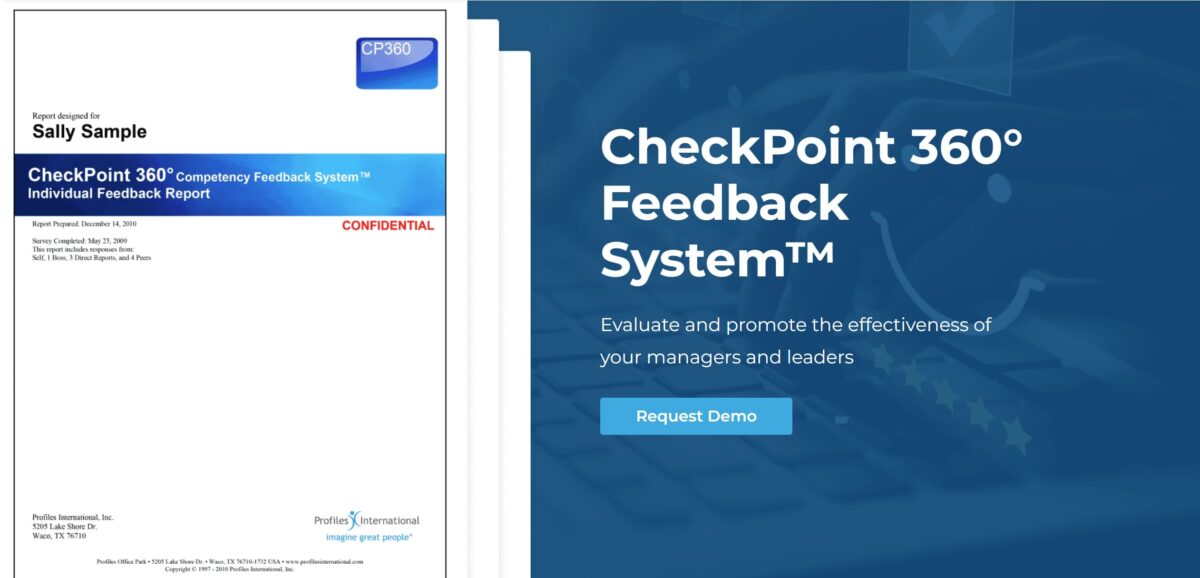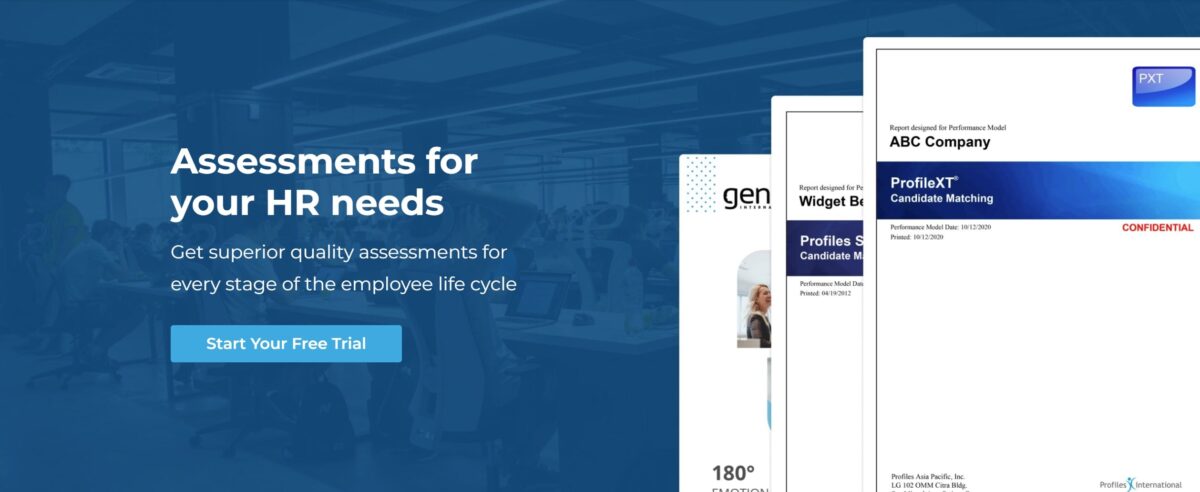In ever-changing business environments, competitions aren’t always won by those with the fastest or strongest employees. In fact, individuals with the potential to grow, adapt, and lead propel companies to the top.
While high-performers do well in their current roles, high-potentials excel in their future ones, despite the added responsibilities. These unsung heroes can steer your organization towards long-term success, but how do you recognize them among your team or candidates?
To help you navigate this conundrum and unlock your workforce’s full potential, we’ll delve into the following:
- The essence of high-potential employees
- How they differ from high performers
- Their key characteristics
- How you can identify and develop high-potential employees
What are high-potential employees?
High-potential employees, often abbreviated as HiPos, are individuals capable of evolving beyond their current roles, assuming leadership positions, and driving significant business impact.
Though they aren’t completely noticeable at first, these workers possess intrinsic qualities and abilities that make them suitable for accelerated career growth.
They not only excel in their current functions, but also have the vision, drive, and agility to overcome new challenges and thrive in future opportunities.
High potential vs. high performance: What’s the difference?
Did you know that only 1 in 7 high performers are actually HiPos? Seeing how rare they are, it’s crucial that you clearly distinguish between the two, as they represent different facets of employee contribution.
First, high performers consistently deliver by meeting or exceeding their assigned targets. They’re the backbone of your organization, as they maintain operational success and stability.
Despite being stellar workers as well, HiPos are distinct because of their ability to grow into responsibilities that demand more time, effort, and commitment. They exhibit intangible attributes such as strategic thinking, leadership, and adaptability, among others.
Key distinctions
To easily distinguish the two, we’ll boil down their differences into three simple aspects:
- Scope: High performers excel in what they currently do, while HiPos are more likely to excel in future jobs with broader, more challenging duties.
- Skills: High performers are experts in their areas. However, HiPos show a propensity for quickly acquiring new skills and navigating uncharted territories.
- Leadership: High performers are often specialists that flourish as individual contributors. HiPos, in the meantime, can inspire and manage teams.
Key characteristics of high-potential employees
Differentiating top performers from HiPos is important, but isn’t enough. Properly recognizing latent talent requires an understanding of what sets them apart. We’ll tackle those traits next.
Accountability
HiPos possess a deep sense of responsibility and integrity, being always ready to accept the consequences of their actions, whether good or bad. At the same time, holding themselves and others accountable establishes high standards that everyone should follow.
Such promising individuals are also more likely to lead their teams well, as they don’t resort to finger pointing when errors occur but rather find ways to turn problems into opportunities.
Learning agility
Employees with heavy responsibilities are always exposed to new, uncomfortable challenges, whether they be due to regulatory, economic, or industrial shifts. HiPos, however, are quick learners who thrive by staying on top of them and acquiring new capabilities.
Adaptability
Learning agility, meanwhile, enhances overall adaptability—an aspect critical to navigating major organizational developments.
For example, major technological advancements could easily impact your business practices, as the tools you use and their associated skills will be rendered obsolete. This, however, can put livelihoods at stake.
To alleviate any resulting employee stress, change management efforts and role redefinition must be conducted. HiPos, in the meantime, are flexible enough to roll with regularly pivoting strategies that respond to changing business conditions.
Resilience
Dynamic business landscapes always give rise to obstacles, but HiPos possess the capacity to overcome them. Difficult workplace scenarios only hinder their performance slightly, if at all, as they can handle setbacks with grace and recover from failures swiftly.
Emotional intelligence
Emotional intelligence (E.I.) is a critical leadership quality that involves effectively recognizing, understanding, and managing not only one’s own emotions, but that of others as well.
Self-awareness and empathy, a couple of its core components, allows one to place themselves in others’ shoes, which helps them manage and influence others properly. It’s also foundational to creating a desirable workplace.
As a whole, E.I., enables fair decision-making, positive relationship building, and better employee well-being. It considers aspects that enhance leadership, like how individuals:
- Handle adversity
- Incite and resolve conflicts
- Manage their moods, as well as others’
- Take criticism
Communication and collaboration
E.I. trickles down to two key aspects that allow workers to thrive in any organization: communication and collaboration.
Since E.I. involves understanding how much time and effort people can commit to their work, as well as their individual skills and output quality, it greatly improves communication.
This lets HiPos cohesively work with teams, as it nurtures empathy and creates a healthy synergy amongst members.
Long-term thinking and strategic orientation
An organization’s mission and vision drive its objectives, while its values influence how they’re pursued. Potential leaders can envision a future aligned with these aspects, and inspire other employees to do the same.
Basically, they understand the bigger picture and can align their strategies with the company’s long-term, overarching goals.
Initiative and drive
HiPos exhibit significant levels of engagement by being proactive and not hesitating to lead projects and initiatives. They also possess a strong drive, as they’re individuals with an innate desire to achieve or exceed organizational expectations.
Career aspirations
Typically, those who wish to excel aspire to grow as well. Ambitious employees, meanwhile, may possess latent capabilities or the drive to develop them, as they’re willing to dedicate time and effort to honing their craft.
Such individuals are key to your organization’s success, mainly because they don’t shy away from future challenges.
Benefits of identifying high-potential employees
Now that you have an overview of what HiPos look like, we’ll break down the advantages of recognizing and nurturing them:
Having a leadership pipeline
Precisely identifying individuals with latent abilities lets you create a pool of future leaders, reducing the risks associated with having gaps in authority and direction. For example, cracks in leadership can result in:
- Poor decision making
- Unmet organizational goals
- Missed opportunities
- Low employee morale
Enhanced performance
A study by the Harvard Business Review reveals that, normally, the top 20% of your workers accounts for 80% of the company’s output. Since only a small group of individuals significantly contributes to your organization’s objectives, it’s crucial that you invest in them.
Position HiPos to succeed by placing them in leadership or management roles, as they can learn quickly, navigate challenges, improve your organization’s performance, and achieve strategic goals effectively.
Employee development and retention
Besides maximizing HiPos’ capabilities, make sure to secure their loyalty. For example, talented individuals seek growth, but the lack of it is the number one reason they leave their employers.
Providing ample upskilling and reskilling opportunities, however, not only supports their development and keeps their skills up-to-date, but also reduces turnover.
Innovation
HiPos possess characteristics that drive innovation in your organization. They’re curious, forward thinkers that aren’t afraid to explore new ideas, discover innovative solutions to complex problems, and challenge the status quo.
Despite their unfamiliarity with certain situations, they’re willing to take calculated risks and embrace uncertainty, which encourages experimentation and the pursuit of new ventures.
Competitive advantage
With proper development, promising individuals can help your company outperform competitors, mainly because of their superior talent and leadership.
Such employees are vital to keeping your workforce engaged, as a Gallup report shows leaders account for at least 70% of discrepancies in engagement scores across all organizational levels.
High-quality leaders care about their people as well, ensuring they can maximize their talents and grow their careers.
With HiPos keeping your workforce involved and motivated, your company can enjoy a performance boost as well, as those with high engagement levels are 21% more productive and 22% more profitable.
How to identify high-potential employees
You’ve laid the groundwork for your efforts at this point. Now, we’ll walk you through some strategies that identify HiPos within your organization and during the hiring process:
Utilize performance reviews
Since they quantify individual organizational contributions and reveal improvement areas, optimized performance reviews can highlight top performers with plenty of room to grow. To maximize them, keep these tips in mind:
- Conduct them regularly. Periodic results can surface trends in employee output.
- Link them to competency and skills frameworks. They pinpoint skills that actually impact your company’s goals.
- Don’t highlight failure, recognize and improve instead. This motivates employees and maintains morale.
- Enable two-way communication. Open dialogue reveals individual issues, as well as the necessary solutions.
Gather 360-degree feedback
360-degree feedback paints a clear picture of one’s influence and leadership potential, as it gathers insights from peers, subordinates, and superiors—people who directly work with the employee being evaluated.

Profiles Asia Pacific’s CheckPoint 360° Feedback System, for example, lets individuals identify their leadership skills and prioritize their development opportunities, as it measures competencies such as:
- Communication
- Adaptability
- Task management
- Relations
- Production
Maximize talent assessments

Standardized tests also reveal talented individuals within your organization and during hiring. In fact, our library of comprehensive assessments evaluate various aspects of a total person, including:
- Cognitive abilities
- Behavioral traits
- E.I.
- Interpersonal needs
Besides leadership potential, these give insight into one’s strengths, weaknesses, and how they function in a team setting. If you want to maximize our evaluation tools, just reach out!
Conduct behavioral interviews
This type of interviewing is based on the premise that one’s past performance is an accurate predictor of their future behavior.
It entails questioning job candidates, as well as employees, about their experiences with specific situations and how they handled them. Their answers, meanwhile, give a glimpse of their problem solving and leadership skills.
Through behavioral interviews, you glean verifiable information about previous workplace actions that let you determine whether an individual is suited to take on a more valuable role.
When conducting them, however, make sure to do it one-on-one, as it sets the stage for a meaningful conversation. Don’t forget to refine your questions beforehand as well.
Assign a mentor or coach
Senior employees or managers that act as mentors can help you pinpoint HiPos within your organization.
Assigning them to new hires during onboarding, for instance, allows them to guide fresh talent for a set period. This applies to employees undergoing development programs as well.
Directly supporting and assessing your talent pool, meanwhile, lets your more-experienced personnel gather first-hand insights that can be used to filter out mentees who aren’t ideal for added responsibility.
Succession planning
We mentioned how recognizing HiPos lets you build a leadership pipeline—a critical element of effective succession planning.
When conducting this yourself, identify roles critical to the organization’s future first. Afterwards, determine who among your current employees are capable of filling these positions.
Your decisions can be finalized based on assessment outcomes, interview results, and the mentor feedback you acquire, but you can also base them off of the initiatives we’ll tackle next.
Have employees join development programs
Taking top performers through development programs can show who’s ready to take on heavier roles. Such an initiative can do the following as well:
- Reveal commitment and drive: Accomplishing a development program requires an investment of time and effort, reflecting one’s dedication to personal and career growth.
- Showcase learning agility: Multifaceted educational opportunities can uncover those who acquire new skills quickly, indicating the potential to thrive in complex roles.
- Monitor progress: By tracking participants’ results, you can pinpoint who consistently performs at a high level and exhibits significant growth.
Maximize job rotations
Job rotations involve moving top performers through various roles and departments, which are excellent for gauging adaptability in different contexts. Basically, these give you a glimpse of a promising employee’s:
- Versatility: How well can they grasp new concepts and make meaningful contributions across various functions?
- Problem-solving skills: Can they formulate creative solutions for problems in different business areas?
- Resilience: Do the demands of varying roles impact their attitude and performance?
Peer recognition
Gather nominations from peers who see potential in their teammates. They’re especially helpful since they come from colleagues who directly work with the individuals you’ll consider. This method is effective for several reasons:
- It uncovers hidden talent: In everyday interactions, coworkers can observe skills and behaviors that are overlooked by managers.
- It gauges influence and team dynamics: Peer recognition can reveal individuals who excel in collaborative settings and are respected by colleagues.
- It validates soft skills: Skills like communication, empathy, and conflict resolution are best noticed by teammates.
How to develop high-potential employees
You should be equipped to identify HiPos by now. Developing them, however, requires a well-rounded strategy. To help your overall approach, here are some best practices:
Establish clear objectives
Without concrete targets, your personnel won’t develop properly. To effectively drive their growth, put the following in place:
- SMART goals: Impossible objectives diminish employee morale, so make sure they’re Specific, Measurable, Achievable, Relevant, and Time-bound (SMART). For instance, aim to reach a certain performance level after X months.
- Clear expectations: HiPos must firmly grasp the organization’s desired results, as this helps them hold themselves accountable.
- Monitor and adjust: Goals will act as performance barometers, so regularly track your employees’ progress. If they’re a bit off-target, make timely strategic adjustments.
Personalize their development plans
Establishing development goals is paramount, as HiPos each have unique growth needs and career aspirations. A Personalized Development Plan (PDP) addresses these aspects and is extremely useful because:
- It aligns development with personal goals: PDPs ensure that one’s growth map matches their career aspirations. It enables a more motivating process, since the HiPos’ journey is in line with their interests.
- It addresses individual proficiencies: Each worker has unique areas of expertise and improvement. A PDP, however, is customized to enhance their strengths and address their weaknesses, ensuring balanced skill growth.
- It facilitates targeted learning: PDPs are based on the exact competencies employees need to develop. This accelerates their readiness for bigger roles, as it ensures the provision of relevant training, mentorship, and experience.
Incorporate management and E.I. training
Taking development program participants through management and E.I. training positions them to succeed in leadership. So, let HiPos develop the necessary skills, whether it be through workshops, courses, or actual experience.
Stretch assignments
Similar to job rotations, stretch assignments push talented individuals out of their comfort zones and compel them to acquire new skills. They don’t necessarily place employees in different departments, but rather challenging projects that help them:
- Build confidence: Accomplishing assignments with strategic value instills confidence, as workers realize they’re capable of meeting or exceeding expectations.
- Take ownership: With significant autonomy, individuals learn to take ownership of projects, particularly because results are driven by their performance.
- Gain visibility: High-profile initiatives place talent in the spotlight, making them noticeable to stakeholders and letting them establish a reputation in the organization.
Mentoring and coaching
Mentors and coaches don’t only identify HiPos within your organization, but provide guidance, feedback, and support as well.
The assistance of experienced personnel can help talent evolve, mainly because of their first-hand insights. This accelerates their development and prepares them for more critical duties.
Executive exposure
Your executives don’t necessarily have to act as mentors or coaches. Simply having HiPos interact with them regularly can already nurture a deeper understanding of strategic decision-making.
You can have promising employees participate in high-level meetings and discussions as well. Such opportunities showcase how executives lead, manage crises, and drive the business forward, helping HiPos acquire actual leadership behaviors from top personnel.
Cross-functional projects
To accomplish cross-functional projects and achieve common goals, teams from different departments must work together. Involving HiPos, meanwhile, broadens their organizational understanding as they learn about various operational aspects.
Throughout the process, they learn about each division’s contributions and how their cohesive efforts push the company to greater heights. Such opportunities expose talented workers to their colleagues as well, allowing them to build relationships that ensure seamless collaboration.
Make feedback a part of your culture
Emphasize regular, open, and constructive communication within your organization. This back and forth not only facilitates the continuous improvement of HiPos, but also personnel across your company’s levels, as everyone has access to ongoing, actionable performance insights.
To properly execute such a measure and ensure the seamless transmission of feedback, however, make sure to establish clear internal communication strategies and channels. Collaborative tools such as Slack, Microsoft Teams, and Asana are excellent options.
Networking opportunities
Encourage HiPos to build networks within and outside your organization. By connecting with a diverse range of professionals, they gain exposure to unique ideas and best practices that expand their perspectives.
They get to build valuable relationships as well, mainly because connecting with colleagues, mentors, and industry leaders lets them establish a support network that opens doors to new opportunities.
Recognition and rewards
Every employee wants validation for their continued efforts. To keep your HiPos motivated and engaged, recognize and reward their development milestones.
Reinforce their positive behaviors and performance by giving simple bonuses or tokens to full on promotions. Whatever the case, make sure their reward matches their level of development and contribution.
FAQs
At this point, you should have a deeper understanding of how to identify and develop HiPos. To cap things off, we’ll answer some questions people typically ask.
1. Can a high performer become a high-potential employee?
Though being a stellar performer doesn’t necessarily indicate latent abilities, one can still grow into higher roles—so long as they’re given the right development opportunities. Their potential may not be obvious at first, but it can be revealed by a thorough assessment process.
2. How often should we reassess high-potential employees?
An individual’s attitude, performance, and aspirations can shift over time, making regular reevaluations critical to developing and retaining HiPos. We recommend you do this annually, as this consistently accounts for such changes.
Typically, HiPos should follow the PDP you set up. If your assessments find that they’re veering away from it, however, strategically adjust and realign their goals with your organization’s.
3. Can someone be a high-potential employee without being a current high performer?
It’s a possibility, especially if they exhibit intangible characteristics that make them suited for hefty responsibilities. With the right opportunities, current role performance can be improved.
On the other hand, resilience, E.I., willingness to learn, and flexibility – characteristics that allow individuals to work well with others and flourish despite challenges – are more difficult to acquire and refine.
4. What are some common mistakes in identifying high-potential employees?
There are multiple errors that can deter you from identifying HiPos. Here are the most vital ones:
- Overemphasizing current performance: While your top performers measurably excel in their current tasks, aspects you can’t quantify like strategic thinking, adaptability, and a drive to tackle new challenges indicate the capacity for future growth and leadership.
- Inadequate assessment frequency: As we mentioned, changes may occur within your employees over time. An insufficient evaluation schedule fails to notice such shifts.
- Lack of personalization: HiPos each have unique developmental needs and aspirations. Having a template approach to their growth doesn’t address them.
- Ignoring behavioral red flags: Before positioning people for success, make sure their core values align with your organization’s. With the right evaluation practices, this can be sorted out as early as employee screening.
- Underestimating the importance of broader exposure: Some top performers function better as specialists than leaders. Cross-functional projects and job rotations, meanwhile, let you precisely recognize such individuals.
5. How do we retain high-potential employees?
Employee retention may seem daunting when it comes to HiPos, as you don’t want to risk losing them. There are some tried and tested measures, however, that can compel them to stay. So, make sure to do the following:
- Provide growth opportunities, but make sure their objectives align with your organization’s.
- Recognize their contributions, as this validates their efforts to learn and evolve.
- Provide mentorship. Excellent leaders set the example and assigning them as guides makes the development process smoother.
- Communication is a two-way street, so be transparent. Listen to issues HiPos have, but make them aware of their problem areas as well. Win-win compromises are a must.
Wrapping up—Identify and develop high-potential employees to drive future organizational success
Recognizing and developing HiPos isn’t just a strategy for maintaining a competitive edge, but also a fundamental aspect of building a resilient and forward-looking organization. To effectively do this, remember these key steps:
- Understand a HiPos’ unique traits
- Employ a thorough identification process
- Differentiate them from high performers
- Follow a personalized approach to their development
By embracing the process of uncovering and nurturing these valuable individuals, you can cultivate a talent pool that will help your company thrive.
Published: June 5, 2014
Updated: June 21, 2024




